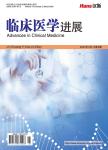神经源性外泌体对阿尔兹海默病治疗的研究进展
Research Progress of Neurogenic Exosomes in the Treatment of Alzheimer’s Disease作者机构:西安医学院研究生工作部陕西 西安 西安市中心医院神经外科陕西 西安 西安医学院第一附属医院神经外科陕西 西安
出 版 物:《临床医学进展》 (Advances in Clinical Medicine)
年 卷 期:2024年第14卷第9期
页 面:1034-1041页
学科分类:1002[医学-临床医学] 100214[医学-肿瘤学] 10[医学]
摘 要:阿尔茨海默病(Alzheimer’s disease, AD)是一种进行性的神经退行性疾病,也是最常见的痴呆症。世界上65岁及以上的老年人超过10%患有AD。AD在神经病理学上与特定脑区域中神经元和突触的进行性损失、淀粉样蛋白斑块和神经纤维缠结的沉积、神经炎症、血脑屏障(Blood-brain barrier, BBB)破坏、线粒体功能障碍及氧化应激相关。尽管做了大量的努力,仍然没有治愈该疾病的方法。近年来,随着科学家们对外泌体进行深入研究,发现神经源性外泌体在治疗包括AD在内的各种疾病方面具有很大的前景,因为它们含有多种抗凋亡、抗炎和抗氧化成分。不仅如此,神经源性外泌体还促进神经发生和血管生成并修复受损的BBB。因此,本文主要概述外泌体的生物发生及吸收、总结神经源性外泌体治疗AD的最新数据及讨论神经源性外泌体治疗AD的挑战和前景。Alzheimer’s disease (AD) is a progressive neurodegenerative disease and the most common form of dementia. More than 10% of the world’s elderly people aged 65 and over have AD. AD is neuropathologically associated with progressive loss of neurons and synapses in specific brain regions, deposition of amyloid plaques and neurofibrillary tangles, neuroinflammation, blood-brain barrier (BBB) disruption, mitochondrial dysfunction, and oxidative stress. Despite a lot of efforts, there is still no cure for the disease. In recent years, as scientists have conducted in-depth research on exosomes, it has been found that neurogenic exosomes have great promise in the treatment of various diseases, including AD, because they contain a variety of anti-apoptotic, anti-inflammatory, and antioxidant components. Not only that, neurogenic exosomes also promote neurogenesis and angiogenesis and repair damaged BBBs. Therefore, this article mainly summarizes the biogenesis and absorption of exosomes, summarizes the latest data of neurogenic exosomes in the treatment of AD, and discusses the challenges and prospects of neurogenic exosomes in the treatment of AD.



